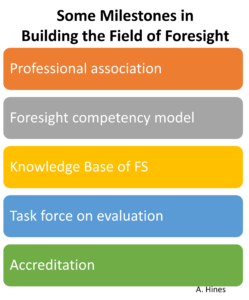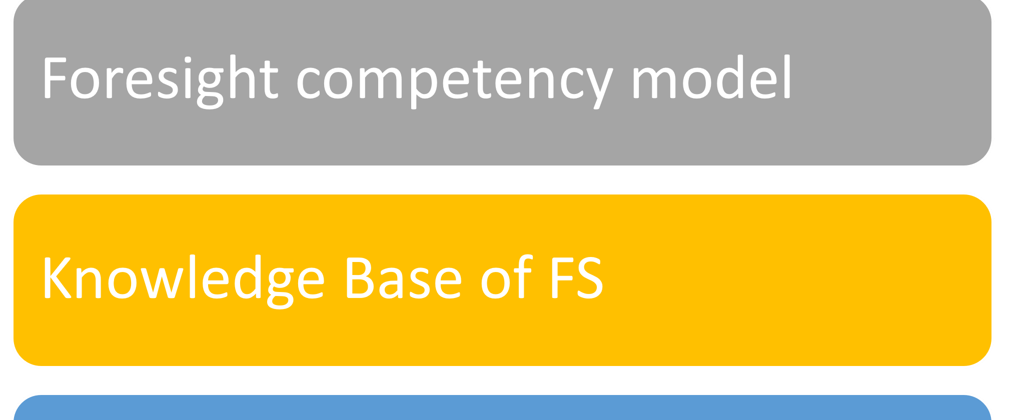It doesn’t take long into a session of what foresight needs before we get to awareness and credibility. It’s been the case as long as I remember in my direct experience going back to 1988 and I read about it being the case before then. So, we’re still at it.

Are we making any progress? I think absolutely yes.
Could it go faster? Also yes.
Will it go faster? Maybe.
We could perhaps be smarter about how we approach it. But a problem with any new capability, field, or discipline is that awareness and credibility take a while.
Where we might be better is telling the story of what we do. There is a tendency for some to believe they have the magic beans and if only we … then… You know what I mean here (I’m not naming names, ha). The advocate of the new, new thing promotes it as THE answer, and even worse is the mass of futurists flock to it as if it is THE answer. Eventually if fades, but years are wasted. I love the idea of new ideas. If we could just find a way to integrate and build instead of critique and tear down.
We have the unfortunate use of foresight and futures studies. I wish we would pick one – I prefer foresight. The “studies” of futures studies is too academic. I think futures would be great, but it has the unfortunate association with pork bellies and commodities markets in the US. I recognize the challenges – I suppose I am wishing for some magic here.
What we can do is keep promoting the work we are doing. A massive drivers study Houston Foresight did with SAP for Open Foresight reinforced for me just how much of our work is behind a secrecy wall. A lot of that could be retrievable and maybe we could build in years of secrecy and then a public release as a standard feature. We have done some field building! In the last two decades we have:
- developed a professional association
- developed a foresight competency model
- put out two updates to our knowledge base
- completed a task force on evaluation
- accredited the first graduate programs in foresight.
These are all very sensible and useful things to do! Of course there is more. What would you add to this list? – Andy Hines

I’m not sure that there is much more you can do Andy. There are many challenges:
– All humans think about the future, but none can prove the future. The best we can do is suggest a future that we can defend with logic and data, but then the disruptions undo our credibility.
– Certifying futures is not like certifying accounting. There is no right or best answer or method for every situation.
– Scoping futures work can help. If futurists acted like project managers and started by first defining a very tight and narrow scope (including what is out of scope) there could be some credibility gained. but even meteorologists with their tight scope, data, and computer models have a poor track record…
– There are too many specialties (scope attempts) to create “A” standard. Economics, weather, sports, war, stock market, society, elections, auto claims, pandemics, et al require different approaches.
Good luck
Andy, The Good Judgment Project is also focused on improving forecasts.
Hi! I’m super curious about an ethics and code of conduct. Maybe we need to formalize or create a certificate the way researchers have (ie. Stanford Experiment)
Andy, i did the foresight for my employer about 25 years. I learned fast that whatever viewpoints we share must be defensible. I was asked to do one “deep future” study for our industry, looking out 3 or 4 horizons… it was damn hard to do and make it seem consumable because i think there are 3 kinds of future:
possible (martians invade),
probable (an extension of today),
preferred (option available to few entities that have assets & desire to shape civilization).
it was hard to describe conditions a few horizons out and still keep it relatable. it had to seem different but still the same…
in the corporate world, i suggest folks focus on “probable” futures for many reasons.
so, what i would share over and over for the preparation or emerging foresight analysts is to articulate “probable futures”… unless you want to be a fiction author then go with “possible futures”.
q